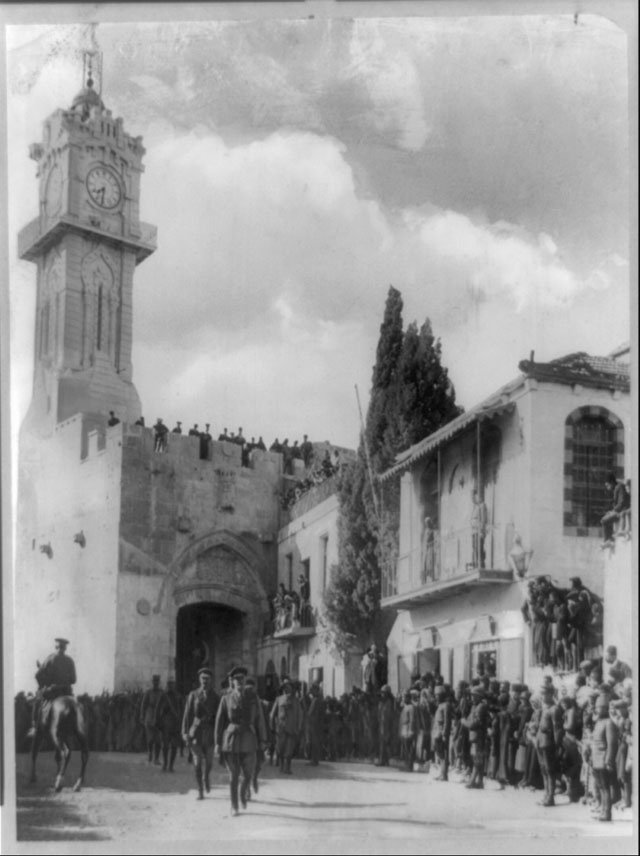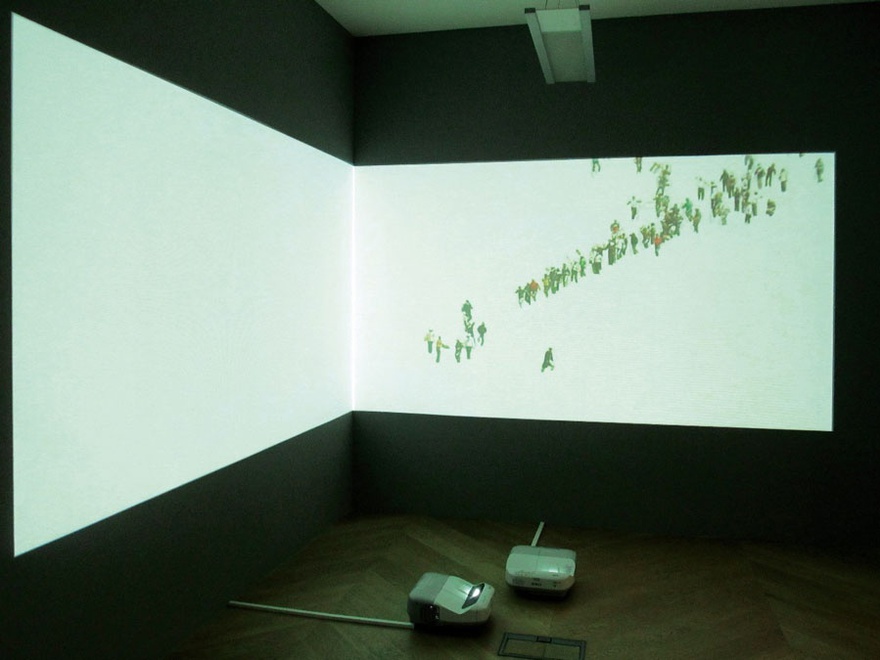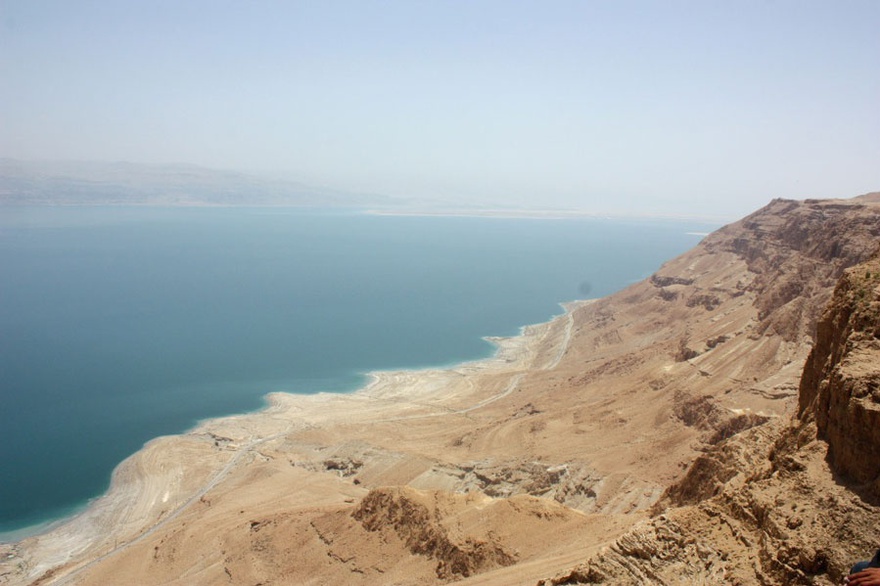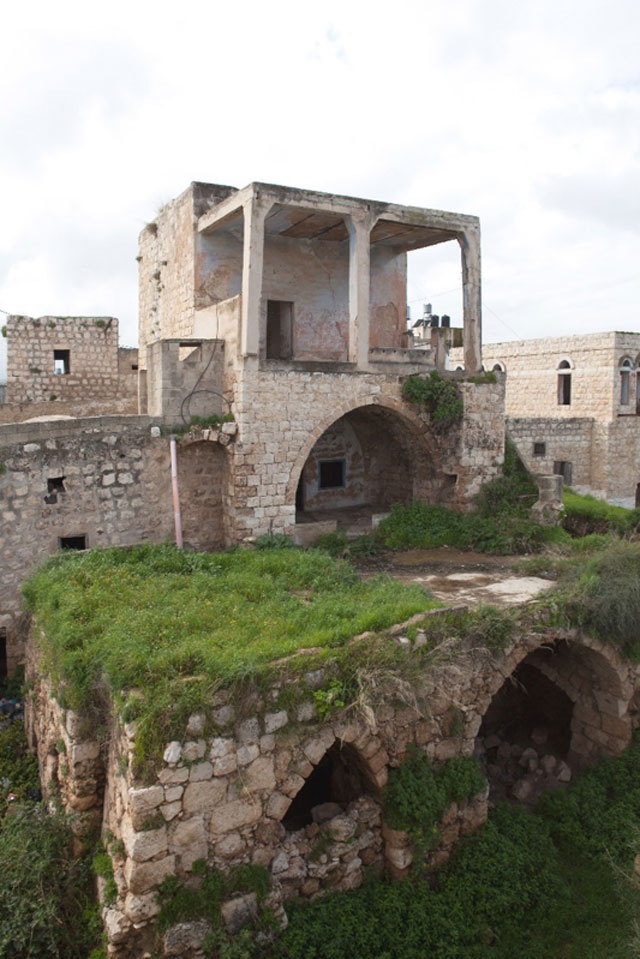A Series of Un-Curated Events
Location: Ramallah
Venue: Hosh Al-Etem, Birzeit Historical Centre.
Dates/Times: Open daily from 11:00–18:00 except on Thursdays and Fridays. Runs through 26 October, 2016.
Organizers: RIWAQ – Center for Architectural Conservation
Artists: Click on the names below to visit each artist's section
The RIWAQ Team, Ahmed Hamza, Alaa Mahdi, Ali Al-Rozzi and Riham Ghazali, Mirna Bamieh, with contributions from Al Jahafil, Rashaydih Bedouins, Abraham Trails, Hajj abu Ammarah, and the Rantis community.
Curatorial Statement
RIWAQ
In the geopolitical and historical circumstances we have been living and experiencing in Palestine, memory, heritage, mobility, space, home and return are concepts loaded with a multitude of meanings and significance. Their signification in the context of Palestine stems mainly from their concrete absence or the lack of concrete relations to these concepts. And like the catastrophe that has been producing and conditioning their meanings and signification, they cannot be objectively and systematically captured. The current discourses, approaches, and for that matter speculations, can neither capture nor conceal such absence. Within the 3rd Qalandiya International, RIWAQ proposes a series of un-curated events in the form of hikes, sessions of knowledge exchange and exhibitions that question these taken-for-granted concepts, allowing for renewed meanings and relations to emerge and intermingle with the concrete landscapes of Palestine.
Bawabet Yafa ('Jaffa Gate')
Bawabet Yafa. Multimedia exhibition. Research and production: Riwaq, 2016.
'…on Sunday, 18 December 1917, Field Marshall Allenby entered Jerusalem in a great military ceremony marking the official victory and the conquest of Jerusalem... I still recall this great day, when he entered Jaffa Gate. The spectacle was followed by yet another ceremony when he visited again in the Christmas holiday, with a grand reception at the castle's portal at the Old Ciy Wall. Unfortunately, when General Allenby delivered his famous speech marking the end of the Crusades, Muslim leaders protested and some pulled out from this celebration…
In 1901, under the presidency of Faydi Afandi al 'Alami, the Ottoman authorities ordered the construction of the prominent clock tower at the Hebron-Jaffa Plaza at the western gate of the city to mark the twenty-fifth jubilee of Sultan Abdulhamid II.
The clock tower was designed in Baroque style by the city's engineer, Pascal Afandi Saroufim. When [engineer Charles] Ashbee was appointed as the head of the Pro-Jerusalem Society, he made the decision to remove and destroy the tower because it conflicted with his vision of the ancient Walls of the City. The clock tower was a monument that was a hybrid of different architectural styles, and it reminded me of the music of Abdulwahhab when he composed in Franco-Arab style.
In spite of this, I believed that it was our duty to relocate the tower elsewhere (instead of destroying it), perhaps to the new municipal building near Barclays Bank.
Because of my endless admiration for everything connected to Jerusalem, I ordered the construction of a wooden model of the Ottoman Tower and the plaza, and therefore:
1. I preserved the image of the City Gate in the British Mandate era;
2. I kept a model of the oriental clock tower that matches my home furniture and my collection; and
3. As certified by professor T.F., the model was eternalized in The Palestine Post, August 10, 1945:
…in a corner of the hall, a phonograph occupies an attractive, magical historical spot, the placement of which conveys elegance and taste; inside a model representing "Hebron Gate". Listen! Look! The magical melodies flowing to your ears from the openings of the model.'
(Excerpts from Wasif Jawhariyyeh's Memoirs, edited by Salim Tamari and Issam Nassar.)
Legal and discursive distinctions of heritage do not capture the essence of heritage in Palestine due to the geopolitical circumstances experienced by Palestinians. Further, the catastrophic fate of Palestine and Palestinians as the result of the 1948 War undermined their attempts to realize a collective that is also material. Rather than having a concrete/non-symbolized relationship with Palestinian landscapes, the Nakba turned Palestine into a set of symbols through which Palestinians relate to Palestine.
Bawabet Yafa is a multi-media exhibition that questions the notion of heritage and memory in Palestine by looking into the space of Jaffa Gate through the lens of early photography in Palestine and the lively memories of Wasif Jawhariyyeh. This narrative tells an alternative story of the relationship between the material past and the national imagination that takes future generations into account and shows that the built environment, although not recognized as heritage, was part of the spatial discourse related to knowledge production about past events (in the future). Bawabet Yafa makes it possible to speculate, 'What would have happened if Jawhariyyeh had kicked Ashbee's butt?'
Safirni
('Deport Me'): I don't want blockades. Like water and air, mobility is a human right.
Multi-media collaborative artwork. Ahmed Hamza, Alaa Mahdi, Ali Al-Rozzi and Reham Ghazali, directed by Tina Sherwell. The research and production of this work was carried out within the 5th Riwaq Biennale activities with support from the Open Society Foundation
Exit Attempt
Like water and air, mobility is a human right. From our birth, we remember our suffering at the Rafah crossing point, thrown into conflicting regimes: Israeli occupation and the Palestinian National Authority; Palestinian National Authority and Egypt; Egypt and Hamas.
Each regime is engaged in getting us into lines of humiliation.
All of this, for what? Just to pass to the Sinai desert?
Imagine: You are on a bus waiting, whether on the Palestinian side or the Egyptian side, at the height of the sun or in the coldest winter. It does not matter. And you are stacked on top of other passengers packed like tomato boxes intended for export or deportation. The most important thing is that after waiting, reserving, bribes and humiliation, you are finally on the bus.
With the passage of time, the complexities have accumulated to the point that the concept of traveling or exiting 'here' has become an illusion. Travel has become a dream. How many dreams of medical treatment have dissipated? Or how many dreams of study abroad were stuck at the crossing point?
Why are our dreams halted at a worn, rusty gate that has witnessed millions and millions of tears? Why do "they" consider the manipulation of our lives normal? And what should we do?
The project is based on the ability of art to break through the barriers imposed by the occupation on Palestine. Through contemporary forms of interpretation, a video of a theatrical performance that integrates projection-mapping technology highlights the barriers to movement, and notions of crossings, occupation, and blockades.
Ahmed Hamza is an architect from Gaza, born in 1989. His obsession with art led him to carry out creative interior and graphic designs as a freelancer and he participates in visual art projects. Recently, Hamza participated in "At Home in Gaza and London", a project with Station House Opera, London. He is currently working on a personal portrait photography project.
Alaa Mahdi is an architect from Gaza. She founded her own business, Falstaka, in 2011 to promote and brand a young and dynamic Palestinian lifestyle based on local calligraphy designs for clothing, pins, pillows, and cups.
Ali Alrozzi, born in Gaza in 1988, obtained a BA in Business Administration from the University of Palestine, Gaza. He worked with several local and international organizations, mainly with children and youth. Following advanced training in theater and performance in Theater Day Production, Gaza, he participated as a team coordinator of the "Safferni" project implemented by Riwaq within the activities of the 5th Riwaq biennale and the 3rd Qalandiya International.
Riham Ghazali, born in Syria, is a photographer and filmmaker based in Gaza. She obtained her bachelor's degree in Journalism and Media from Al-Aqsa University. She has produced several short documentary films and participated in international festivals and competitions.
This Mined Land Of Ours
Video art, 2:05 min on loop. Mirna Bamieh. The project was produced for the Young Artist of the Year Award organized by the A.M Qattan Foundation, 2012.
The 15th of May 2011 coincided with the 63rd anniversary of the Nakba. Palestinian refugees in Syria crossed the border, a minefield, between Syria and the Golan Heights. This marked their most serious physical attempt to return to their place of origin.
The mass-distributed imagery of the event triggered many questions inside me: questions about my existence in Palestine at that particular moment, in that place, on that land. It made me question my position as a Palestinian, as a spectator, and as a party addressed by the event.
I delved deeper into those questions. I started to track a connection between me and them, Us. Some of those people are from Yafa like me, and their families probably became refugees in the same year that my family moved from Yafa to Jerusalem. They are returning now, to where I am now. They are returning to their lost land, a land that has traumatized their memory for decades, a land whose loss they identify with, a loss that trapped them in the melancholic existence of refugees.
Do they really know what they are returning to? Are they ready for this return?
Are they ready for a new trauma? Or maybe mourning? Do they really want to be where I am now?
Weren't we all, at that moment, marching back to our land through them? I abstract this land to purify it from history; I abstract this land to open it up.
Mirna Bamieh is an artist from Jerusalem, Palestine. Her work attempts to understand and contemplate the ever-shifting politics, while equally questioning notions of land and geographies of in-between temporality. Recently, her projects have looked more at scenarios that adopt the language of the absurd and the ironic, using them as tools for political commentary. She has participated in several art residencies, including the Maroc Artist Meeting, Art Omi, Ashkal Alwan, Kathmandu Contemporary Art Center, Delfina Foundation, and Global Arts Village.
Sarab
Contributions by the Riwaq team, al Jahafil, the Abraham Trail, Khaled Rashaydeh, and al Rashaydeh Bedouins
Al Masafir is a transient space, a location, and a condition of human existence and resilience. In between the West Bank mountains to the west, the Naqab desert to the south, and the Dead Sea to the east, al Masafir is practically a peninsula made up of natural frontiers and artificial borders. A Sarab four-wheel drive to the Dead Sea is a journey of exploration into the social and cultural life of Palestinians shaped by historico-political and territorial colonial conditions. In al Masafir, the center, periphery, home, refuge, economy, water, electricity, and mobility are controversial concepts that are not settled.
The guided tour explores the life and unknown landscapes of the Palestinian wilderness along the Jordan Valley to obtain a glimpse of what it means to be subjected to a very harsh natural, cultural, and political landscape.
The al Jahafil (4-wheel drive) caravan departs Riwaq on October 11, 2016 at 9:00 a.m. The caravan stops for a break at Ibn Obeid monastery in al Obeidiyyeh before departing on the main road heading to the wilderness (al Masafir). Here we hike for 30 minutes to the Dead Sea to experience the view at mid-day in autumn while listening to descriptions of the nature and culture of the wilderness in the Valley. We continue on to the hamlet of al Rashaydeh for a Bedouin lunch and a chat with our host overa cup of Arabic coffee, before returning to Riwaq.
Contributions from the Riwaq Team, the Rantis community, and Hajj Abu Amara Saleh.
The event consists of three main elements: a guided tour, oral history, and sightseeing in Rantis – a frontier village on the Green Line.
The guided tour will take place in the recently rehabilitated historic center and comprises a walk through the alleys and neighborhoods of Rantis, with some resting stations.
An oral history event will take place in al alali (a summer guesthouse), narrated by Hajj Amara Saleh, a village elder, who will relate the social and political history of the village.
The sea view is from the balcony overlooking the Mediterranean coast, which Palestinians can see but cannot reach.
Riwaq Centre for Architectural Conservation (RIWAQ), is a non-profitt organization whose mission is to protect, restore, and rehabilitate the architectural and cultural heritage in Palestine. RIWAQ›s areas of focus include the compilation of the Registry of Historic Buildings, the rehabilitation of the historic centers of Palestinian cities and villages, the restoration of historic buildings, the research and documentation of architecture in Palestine, and the publication of the monograph series The Architectural History of Palestine. RIWAQ also aims to raise popular awareness about the importance of cultural heritage in formingthe identity and civilization ofthe Palestinian people, and as a basic pillar of socioeconomic and political development in Palestine. The RIWAQ team comprises: Aya Tahhan, Carol Michael, Khaldun Bshara, Kholoud Al Najjar, Loor Awwad, Michael al Far, Michel Salameh, Mohammad Subhi, Renad Shqeirat, Ruba Salim, Samah Daraghmeh, Shatha Safi, Suad Amiry, Tareq Dar Nasser, Usama Hamadneh, Yousef Dar Taha, and Yara Bamieh.




